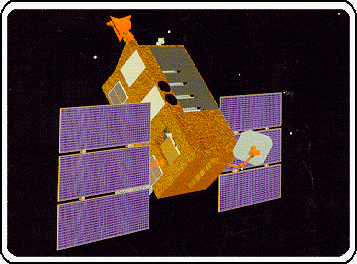 |
 |

The high-mass X-ray binary (HMXRB) X1700-377 was first detected by the Uhuru satellite in the early 1970s. The Uhuru observations revealed that it is an eclipsing binary system. Optical observations of the companion star HD 153919 indicate that it is an O star, located at a distance of 1.8 kiloparsecs. The X-ray star, identified as a neutron star, is powered by the stellar wind of its companion.
Although many observations have been made over the past almost 30 years, a pulse period has not been detected for the neutron star. This makes determining the orbital parameters of the system more difficult. It is possible, however, to get some handle on the orbital parameters by good observations of the eclipse.
The orbital period has been seen to decrease. This was first detected by the EXOSAT Observatory and has been recently confirmed by BATSE observations onboard the Compton Gamma-Ray Observatory. Two possible causes of orbital period decrease by the system are due to wind-driven angular mamentum loss from the companion star and the tidal mechanism. The BATSE observations imply that the angular momentum loss is the dominant cause of the period change.

Live from RXTE! is a project out of the High Energy Astrophysics Science Archive Research Center (HEASARC), Dr. Nicholas E. White (Director), within the Laboratory for High Energy Astrophysics (LHEA) at NASA/GSFC.
Website Text Authors: Live from RXTE!
Team
Responsible NASA Official:
Questions/Comments/Feedback
Privacy, Security, Notices